Newsletter: We write about environmental calamity. Here’s what gives us hope
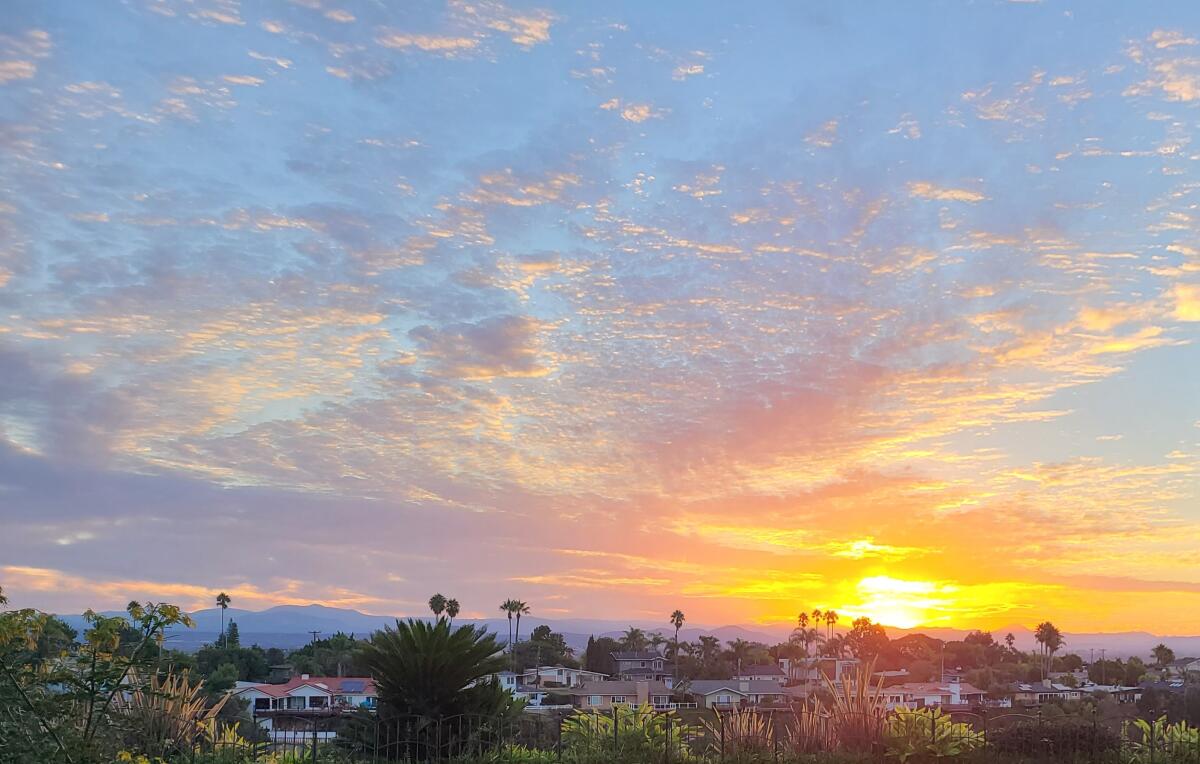
This is the Nov. 25, 2021, edition of Boiling Point, a weekly newsletter about climate change and the environment in California and the American West. Sign up here to get it in your inbox.
Good morning, and welcome to a holiday edition of Boiling Point. I hope that whatever your life might normally look like — phone calls, meetings, endless emails — you can take a break this weekend, eat some delicious food and spend time with loved ones.
The climate crisis doesn’t take Thanksgiving off, and neither does this newsletter. But this week we’re doing something different.
As I’ve written previously, people often ask me how I stay hopeful, given the scary stuff my colleagues and I write about — deadly heat waves, devastating fires, fast-rising seas, and underlying many of those problems, political inaction and corporate greed. As journalists, we’re so focused on telling these stories that we rarely take time to stop and reflect, and share how we stay afloat.
So to celebrate Thanksgiving, I asked my colleagues who cover environmental issues what gives them hope.
Here’s what they had to say.
LILA SEIDMAN, breaking news
A National Park Service official recently shed tears of joy relating how a grove of giant sequoia trees was likely saved from devastating fire damage due to measures taken to protect them in the nick of time.
Though thousands of the majestic trees perished, the official was deeply concerned for the giants — and resolved to keep fighting for their survival.
Reporting on catastrophic wildfires, unyielding drought and other climate change-driven horrors in California, I often bear witness to the fierce love people have for our natural wonders. It’s heartening to see this emotional bond inspire individual and collective action to protect these marvels. I’m hopeful this bodes well for the larger fight against climate change.
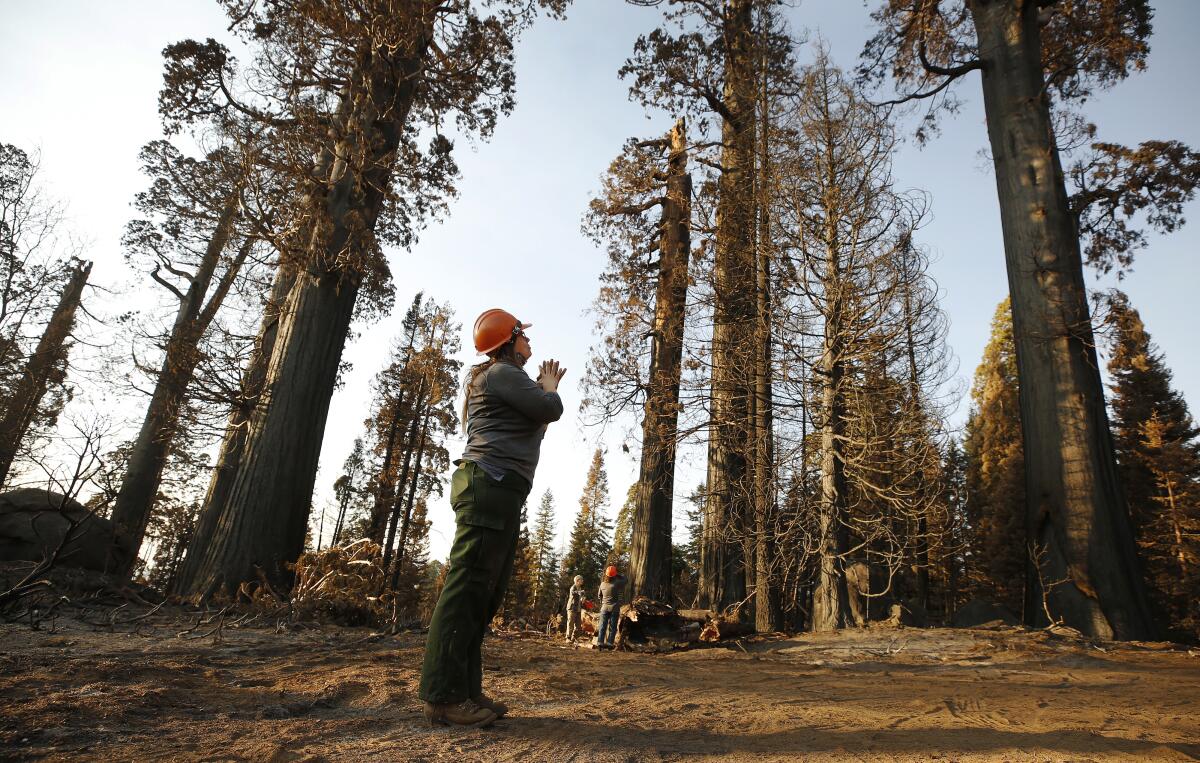
EVAN HALPER, Washington, D.C., correspondent
Politicians love to talk about environmental justice. But for people living in fence-line communities, those words too often ring hollow. The state’s stark economic divide, unique geography and large concentrations of heavily polluting facilities have created a public health crisis that too often feels intractable to the low-income Californians who suffer disproportionately from it.
Yet California has developed a novel approach for confronting these inequities. A tool called CalEnviroScreen has been refined and turbocharged to the point where it is now a national model for locating the census tracts most overburdened with pollution. The state uses the data to direct funding to hard-hit communities — and to force local officials to consider the history of toxic air and economic hardship before allowing more pollution.
Cities and counties ignore the mapping tool at their own peril. California’s attorney general is watching, filing legal actions against local governments that approve heavily polluting projects in communities already struggling with some of the state’s lowest air quality and highest poverty rates. CalEnviroScreen inspired state officials to join the fight against a toxic cement factory in Vallejo, a mega-warehouse next to a school in the Inland Empire and an Amazon air cargo hub down the road.
IAN JAMES, water
Several months ago, I met ecologist Michael Bogan on the banks of the Santa Cruz River in Tucson. He was carrying a net and a bucket to collect samples of aquatic invertebrates such as snails and giant water bugs.
We sloshed through the stream, passing thickets of cattails, and arrived at Bogan’s study site, where blue dragonflies were hovering over a clear pool. None of this — not the water, the plants or the bugs — existed a few years ago.
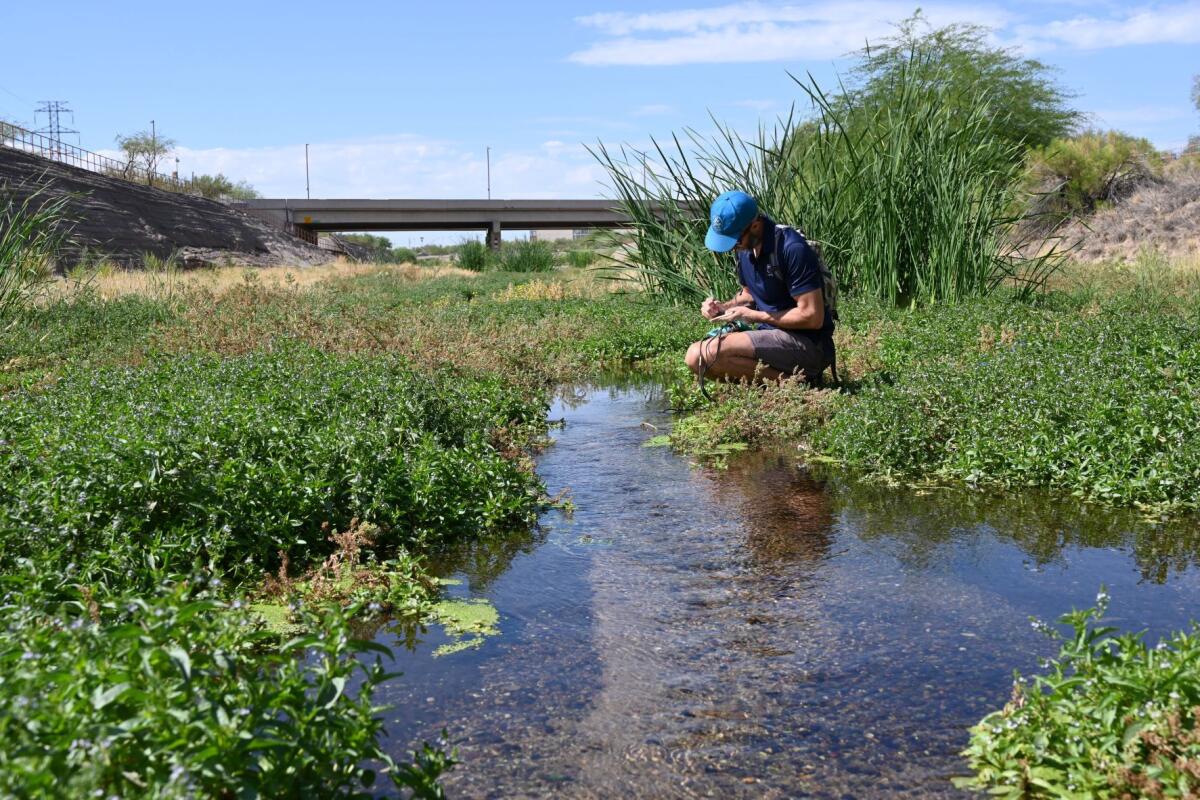
For much of the past century, the riverbed sat dry except when rainstorms sent runoff flowing into the channel. Then in 2019, Tucson began releasing treated wastewater near downtown. That decision has brought back a flowing stream, and it’s teeming with insects, birds and other wildlife.
When I reported on the river’s resurgence and Bogan’s research documenting the new ecosystem, I felt hopeful seeing that even a small amount of water, when used in this way, can have a dramatic effect and create a space for nature to flourish.
RUSS MITCHELL, autos
I rarely turn to material objects as sources of optimism. But in this case, that source is a pickup truck.
At a time of climate crisis, there’s no way to significantly reduce tailpipe emissions of greenhouse gases without a major shift to electric vehicles. Well-to-do urbanites with large stock portfolios have turned to Tesla and other cutting-edge cars with enviro cred, but it’s going to take something more mainstream to lure in Americans as a whole.
That something could be the Ford F-150 Lightning pickup truck. Gasoline and diesel F-150s have ranked as the country’s best-selling motor vehicles for decades. Ford is going out of its way to make the Lightning look and feel pickup-truck normal, pumping its advantages in torque, worksite electric generation and operational cost savings.
Ford is swamped with orders for the Lightning, which goes on sale next year. Chevy and Ram have electric pickup plans, too. Success is not assured, but if electric pickup trucks get snapped up in places like Kansas, Nebraska and California’s Shasta County, the transition to electric vehicles could prove unstoppable.
ALEX WIGGLESWORTH, wildfires
When it comes to wildfires in the Western U.S., the outlook can seem bleak. Fires are growing larger, more intense and harder to fight due to climate change, forest management decisions and continued development in high-risk areas.
At the same time, as I report on these issues, I get to speak with so many experts who have dedicated their careers to better understanding these dynamics and figuring out how to improve them. That’s what gives me hope. We have some of the brightest minds working on these problems, from fire officials to land managers and scientists. I’m always grateful when they take the time to share their work with me.
ROSANNA XIA, coast and ocean
It has been encouraging to see so many scientists back in their labs and out on the water, resuming all the field work that had been stalled during the first year of the pandemic. I’m grateful for this research that continues to help us understand the ocean and the future of our planet.

STUART LEAVENWORTH, Boiling Point editor
The United States accounts for 4% of the world’s population and — according to a 2019 report — 12% of its garbage. That may not seem like a hopeful pair of statistics, but it is. There’s enormous potential in dramatically reducing U.S. waste and realizing the benefits: Less plastic washing onto beaches. Less good land wasted for landfills. Fewer greenhouse gas emissions.
Changing wasteful practices requires engaging people in the alternatives, and making those choices simple, stylish and even fun. That’s why my Instagram feed includes sites such as Bea Johnson’s zerowastehome, #goingzerowaste and, separately, Kathryn Kellogg’s going.zero.waste.
These influencers, among so many others, are trying to change the mindset about home life. They are going beyond reuse and recycling and the Buy Nothing Movement to a future that includes families growing more of their own food, decluttering their lives and giving gifts that really mean something, because they made them themselves.
The supply chain crisis has demonstrated the risks of mass dependency on imports and retail consumption. The zero-waste dream may be dreamy, but it is part of the solution.
HAYLEY SMITH, breaking news
Writing about California’s climate crisis can be grueling. Some stories this year broke my heart, like fires threatening giant sequoia trees and startling images of our state’s dwindling reservoirs.
But others gave me hope. When I was in Lake Tahoe covering the Caldor fire, I’d often approach people on the street or in their driveways. Almost without fail — and even as ash fell from the sky and thick black smoke choked the air — they would take time to tell me about their families, their lives and their fears. Sometimes they’d give me coffee or invite me to their homes.
Those interactions fill me with gratitude. I don’t know whether California (or the world) will be able to prevent the worst effects of climate change, and in fact many have already begun. But despite what can seem like a growing divide, I feel optimistic each time I am reminded that people are generous, people are kind, and people are willing to work together even when it feels like it’s all falling apart.
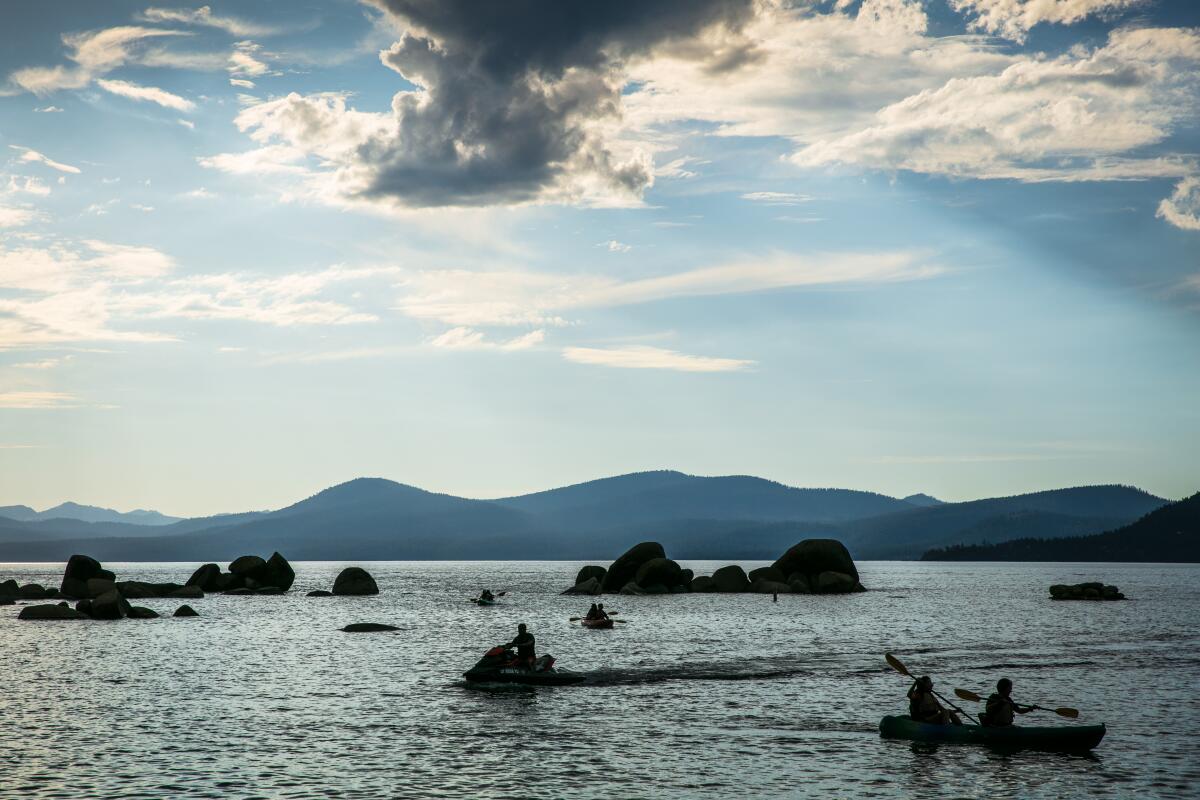
SUSANNE RUST, environmental investigations
I sense a caring and concern where I didn’t even two years ago — in part because of the pandemic.
Remember those few weeks when nobody was driving? Or flying? The air was so clear. I heard people describe it as sweet and alive. They couldn’t get enough of it. In the San Francisco Bay Area, where I live, we marveled at being able to see individual redwoods on the Santa Cruz Mountains from the Bay. Everything was so crisp. And then there were the sounds: We could hear birds, tree frogs and wind — without the constant hum of traffic, grind of leaf blowers and thudding, pounding and cranking of construction.
Everybody kind of “woke” up to the natural beauty around them — and I think it has stuck.
When you add to that the visceral calamities our warming planet has dropped on us recently — record-breaking heat waves, fires, bad air, drought and even that crazy atmospheric river dump that struck Northern California in October — I sense a sentiment of action and urgency where I didn’t before.
And that gives me hope.
I guess it’s weird to be thankful for a pandemic and waves of climatic destruction. But having endured them, I do think they’ve produced something meaningful. And I’m thankful for that.
***
And as for me? I’m thankful to all of you who read Boiling Point and make it a priority to engage with these crucially important issues. It gives me hope that so many people not only want to learn about this stuff — even when the stories are scary — but also take the time to share feedback, ask questions, and most importantly use our journalism to try to make positive change.
So, thank you. Please keep it up!
On that note, here’s what’s happening around the West:
TOP STORIES
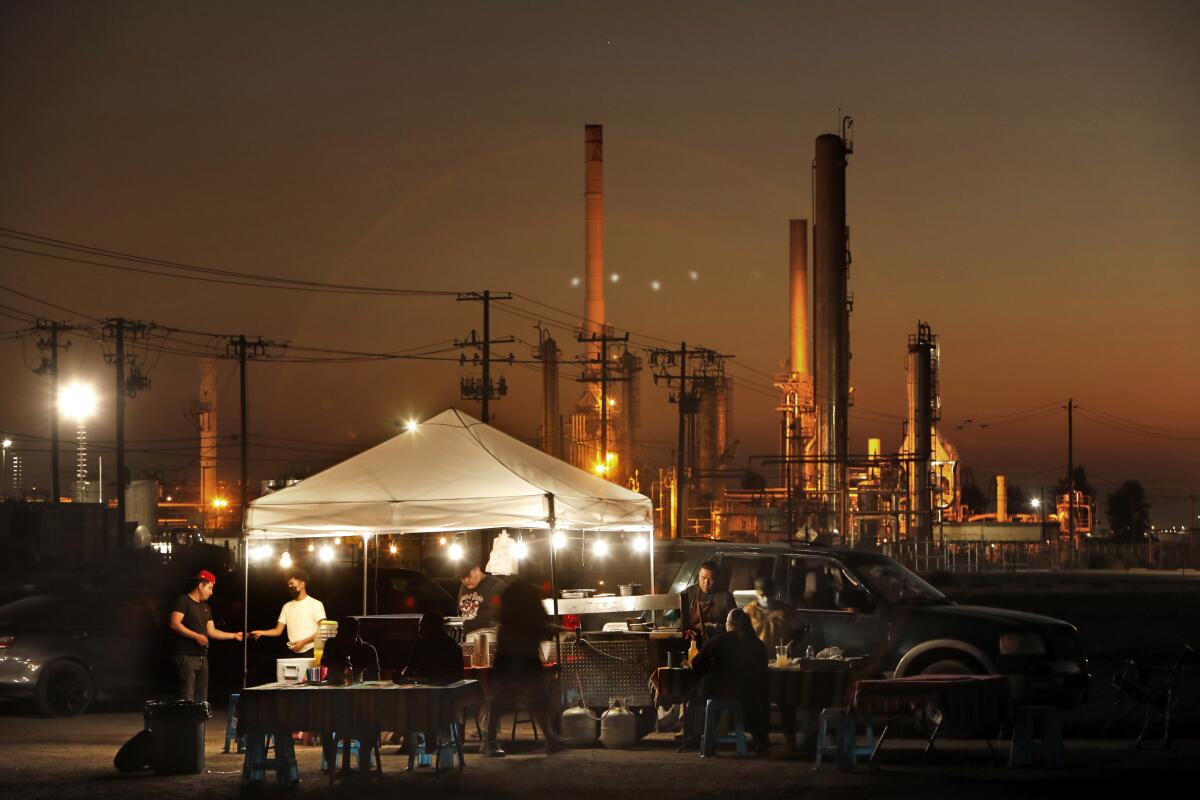
California’s attorney general is partnering with local activists to fight Amazon warehouses, oil refineries and other industrial polluters in low-income communities that already breathe terrible air. The environmental justice initiative could be a model for the nation, with the Biden administration looking to replicate the state’s CalEnviroScreen mapping tool, my colleagues Evan Halper and Anna M. Phillips report. Also watch this video by The Times’ Jackeline Luna to hear from Inland Empire residents forced to breathe heavily polluted air, courtesy of the companies meeting our insatiable demand for speedy delivery of goods.
For decades, many California farmworkers migrated to Oregon in the summer, for cooler weather and easier working conditions. But with the planet heating up and Oregon scorching like never before, fewer are making the trek, Priscella Vega reports for The Times. It’s not just warmer weather reshaping the Pacific Northwest — this year the region went from deadly heat to devastating floods in just a few months, which sure sounds like climate change. And in a surprising bit of science, Julia Rosen reports for High Country News that intense heat snaps can be deadlier for some plants and animals than long-term warming.
Much of the water that flows through the Colorado River and other major rivers originates in national forests. But the U.S. Forest Service is systematically failing to protect its streams, allowing far more water diversion than is sustainable and at times failing to review permits that have been expired for years or decades, according to a USA Today Network investigation led by the Coloradoan’s Jacy Marmaduke. See also this companion story by the Arizona Republic’s Caitlin McGlade showing how ranchers, cities and others pressure the Forest Service not to impede or even measure their water use, and more reporting from Jacy on a unique state-federal deal has helped protect streamflows in Montana, giving those waterways a buffer against climate change.
ON OUR PUBLIC LANDS
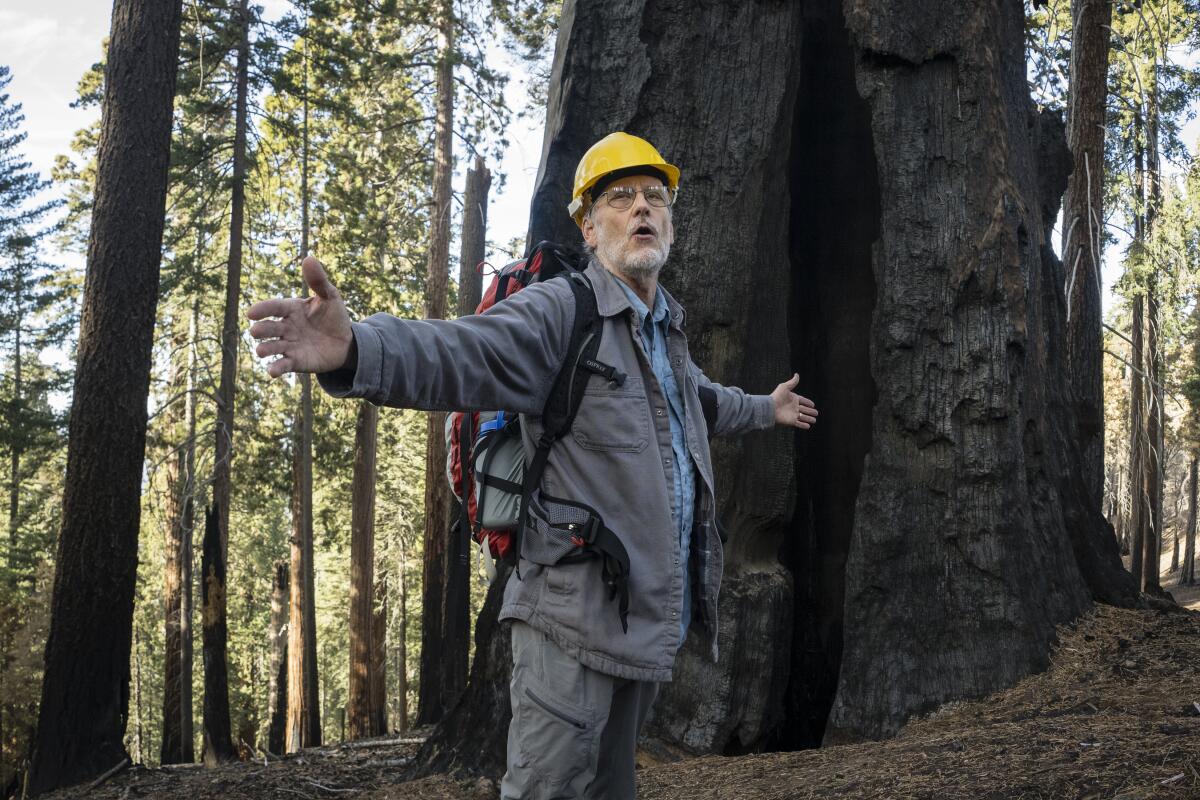
Recent wildfires in the Sierra Nevada may have killed as many as 3,600 giant sequoias. Somewhere between 3% and 5% of the world’s remaining sequoias were likely killed, my colleague Lila Seidman reports — and yes, that’s on top of the 14% of the sequoia population that may have been killed by last year’s Castle fire. It’s not great. For something more uplifting, read this piece by Lila about rare Sierra Nevada red foxes that survived the Dixie fire, showing amazing resilience in the face of climate change.
The Mojave Desert Land Trust has now protected 100,000 acres in California. The Desert Sun’s Erin Rode wrote about what the group’s new leaders see as the biggest challenges for desert ecosystems, including the growing number of solar and wind farms. Renewable energy development is one of several threats to desert tortoises in particular, as Brandon Reynolds writes for KCRW.
The Biden administration is taking another crack at saving the greater sage grouse, after President Trump tried to scale back Obama-era protections. The colorful birds were once abundant across the West, but their numbers have dwindled as oil and gas drilling, grazing, wildfires and other pressures have destroyed their habitat. Details here from the AP’s Matthew Brown.
OIL AND GAS POLLUTION
Boats used for sport fishing, whale watching and other daily trips generate 21% of all diesel emissions in the L.A. Ports area, adding to cancer risk for local residents. State regulators are cracking down by requiring cleaner engines, my colleague Hugo Martín reports. Elsewhere along the coast, an oil sheen was reported in the same location as the recent Huntington Beach oil spill; it seems to have been a residual leak from the same damaged pipeline, The Times’ Matthew Ormseth reports. Meanwhile, federal officials boarded a second ship that’s under investigation for possibly causing last month’s spill, Richard Winton reports.
The world’s largest public relations firm, Edelman, pledged to start taking climate change seriously after facing pressure from activists. Although the company has now unveiled its climate plans, Chief Executive Richard Edelman is defending his firm’s fossil fuel industry clients, telling Axios’ Ben Geman, “We work with oil majors. I’m proud of our work. I think that bigger question over time is, how we can help them express their transitions.” I’m guessing climate activists weren’t pleased to hear that. See also my piece from earlier this year on the Clean Creatives campaign pressuring PR firms to stop working for the fossil fuel industry.
Nevada’s biggest utility, Southwest Gas, is pushing back hard against efforts to promote all-electric homes, much like Southern California Gas. Here’s the story from the Nevada Independent’s Daniel Rothberg, featuring a cameo by Carl Icahn.
THE ENERGY TRANSITION

Mexican President Andrés Manuel López Obrador — often referred to as AMLO — has attempted to push his country away from renewable energy and toward state-owned coal and crude oil plants. But despite President Biden’s clean energy ambitions, he’s unlikely to press his Mexican counterpart to make climate a priority, Kate Linthicum and Chris Megerian report for The Times. That’s because Biden’s administration, for better or worse, sees reducing migration as a higher diplomatic priority.
Bill Gates wants to build a new type of nuclear reactor at a soon-to-be-shuttered coal plant in Wyoming — and get it done super fast, at least for a nuclear plant. The advanced reactor designed by Gates-founded TerraPower offers a lot of promise for reducing climate emissions, with the potential to generate power more safely, cheaply and flexibly than traditional nuclear plants, per the Seattle Times’ Hal Bernton and Inside Climate News’ Judy Fahys. But critics are skeptical that it will work as planned.
Eye-opening new reporting shows how China has come to dominate the Congo’s vast supplies of cobalt, a metal crucial to electric vehicle batteries. The country is on the front lines of a growing geopolitical battlefield over the clean energy transition, the New York Times’ Dionne Searcey, Michael Forsythe and Eric Lipton report. Here’s more reporting from the same folks showing how American indifference allowed China to take over some of the world’s biggest cobalt deposits from a U.S. company.
POLITICAL CLIMATE
Gov. Gavin Newsom has chosen a new president for the California Public Utilities Commission. It’s his senior energy advisor, Alice Reynolds, and she’ll replace outgoing president Marybel Batjer on Dec. 31, the San Francisco Chronicle’s J.D. Morris reports. Reynolds will have her work cut out for her, with wildfire safety and utility power lines being the agency’s highest-profile concern. Even this week, Southern California Edison warned it might shut off power to nearly 100,000 customers on Thanksgiving to limit the risk of its infrastructure igniting fires, my colleague Hayley Smith reports. San Diego Gas & Electric issued a similar warning.
House Democrats passed Biden’s “Build Back Better” package, which includes about $500 billion in tax incentives and grants to speed the transition to clean energy. It now moves to the Senate, where a total lack of Republican support means it needs “aye” votes from all 48 Democrats and two independents to pass, The Times’ Jennifer Haberkorn reports. The infrastructure bill that already cleared Congress, meanwhile, could have included changes to the 150-year-old mining law that lets companies extract gold, silver, copper and lithium from public lands without paying royalties. But with Nevada Sen. Catherine Cortez Masto objecting, Congress passed up another chance to reform the General Mining Law, Cody Nelson writes for High Country News.
The Senate unanimously confirmed Chuck Sams as the first Native American director of the National Park Service. Details here from Kurt Repanshek at National Parks Traveler. Elsewhere in the Interior Department, a Government Accountability Office report found that more than half the Black employees at Bureau of Land Management headquarters either retired or quit rather than accept the move to Colorado forced on them by the Trump administration, the Washington Post’s Joshua Partlow reports.
ONE MORE THING
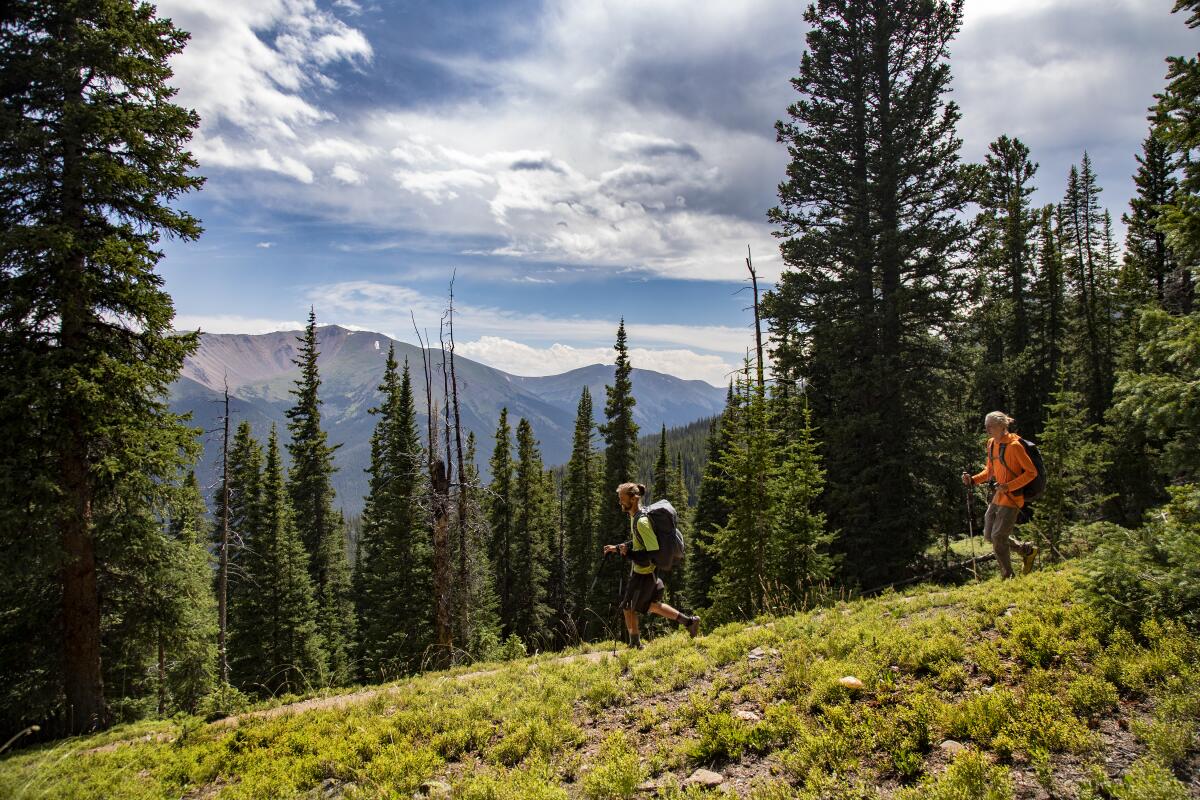
If you read anything on Thanksgiving, read this story by my colleagues Faith E. Pinho and Gina Ferazzi. They followed two young hikers as they trekked three of America’s longest trails — the Appalachian, the Continental Divide and the Pacific Crest — in a single calendar year, during a pandemic. The hikers faced a wildfire evacuation, a charging bear, an E. coli infection and more.
Even more than the physical and psychological challenges they overcame, I was impressed by this comment from one of the hikers, 21-year-old Jackson Parell: “At the end of the day, there was a lot that went into this that had nothing to do with our will and desire for it to happen. A lot of it had to do with the luck and privilege that we’ve been blessed with.”
Should we all be so cognizant of our blessings.
We’ll be back in your inbox next week. If you enjoyed this newsletter, please consider forwarding it to your friends and colleagues.




